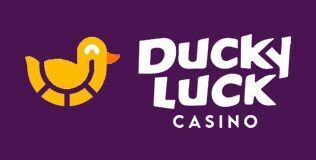Get an Edge in Blackjack with These 5 Card Counting Systems That Work

- Card counting is a strategy used by blackjack players to gain a potential advantage over a dealer.
- Considered the best card counting systems you can learn, it’s an essential weapon to any player looking to maximize their long-term gains.
- This post examines the best methods for card counting in blackjack while explaining how they work.
Although not illegal without outside assistance or aid, casinos can eject players they suspect of card counting.
While not impossible, it’s a little tougher for online casino sites to make that call. Either way, if you are looking to devise a blackjack card counting strategy worth its salt, there are some things you must know.
Our blackjack guide will get you warmed up.
It goes without saying that the best blackjack card counting system is one that you should always keep to yourself. At no point should you give a dealer any indication that you are one step ahead.
Furthermore, gambling of any kind involves a risk. Remember that many smaller details are involved in learning how to use the following strategies. But once done right, they could raise your game in a short amount of time.
Ready to go? All right. Let’s get started.
Master Basic Blackjack Strategy
Blackjack is regarded as one of the most player-friendly games you can find at a casino. This is mostly down to the favorable odds.
Once you introduce some of the best card counting systems, things can get even better. Essentially, a player can change the probabilities left in the deck after every hand.
You see, a deck of cards used in blackjack has a memory of previous events in the form of changed probabilities. That memory gets wiped when the deck gets reshuffled. But the deck’s composition doesn’t matter unless you’ve mastered basic strategy first.
This is where the best card counting systems come in.
This means that a player is taking the action with the highest mathematically expected value in any given situation. Sometimes, this means choosing from several options, all of which have a negative expectation.
But a player using basic strategy chooses the action with the lowest negative expectation.
When you see websites or books quoting a specific house edge for a variation of blackjack, that number assumes you’re using the perfect basic strategy. If you’re not using a basic strategy, you will face a house edge that’s 2% or higher than that number.
No amount of counting cards and no method will overcome that kind of edge.
So, before you even start to worry about which card counting method you should use, you should master basic strategy.
Identify the Best Blackjack Card Counting Systems
There is one major reason that card counting works in blackjack.
Essentially, it is because the cards that have been dealt and the cards that remain change the probability of the game as you are playing.
One way to count cards would be to memorize which cards have been dealt so you’d know exactly which cards are left in the deck. Although regarded as the best blackjack counting system, many gamblers consider this a feat only a superhuman could accomplish.
But that’s not entirely true. It is possible to memorize a deck of cards. In fact, it’s probably easier than you might think.
With that said, most card counters use a simpler structure that doesn’t require much memorizing to get an edge.
One of the best card counting systems involves the high cards versus low cards method. You can use this at live online casinos or land-based venues. As with most strategies, the trick to it is categorizing the cards into two types.
- High cards
- Low cards
The reason card counting works — or at least one of the major contributing factors to its success of it — is the increased probability of being dealt a blackjack when the deck has lots of high cards left in it versus low cards.
The 10s and aces are considered high cards for this purpose. Those are the only two cards in the deck that can generate such a two-card hand. A blackjack pays off at 3 to 2 in most blackjack games at most casinos.
You’ll find some casinos offering 6 to 5 payouts, but those games are best avoided. Don’t fall into the trap of thinking that 6 to 5 is better than 3 to 2 because 6 is bigger than 3.
Put it like this: a 6 to 5 payout on a $100 bet is only $120. With a 3 to 2 payout, that same bet pays off at $150, which is much better.
Again, the best blackjack card counting systems will account for this. And in most of them, numbers 2 to 6 are considered low cards.
The ratio of high cards to low cards is what almost all card counters use to change their bet sizes and playing strategies to get an edge over the casino.
Focus on Tens and Aces
I can’t overstate how important the aces and tens are to this line of thinking.
It might seem obvious why having a deck with a higher proportion of those cards would favor the player, but I always like to use a simple example in the opposite direction to illustrate this point.
Imagine a deck of cards where all four aces got dealt in the first hand (for this example, we’re assuming a single-deck game). What’s the probability of being dealt a blackjack from the deck that’s left? Without any aces, the probability has dropped to 0%.
Even the best blackjack card counting systems recognize that getting a blackjack without an ace and a 10 in your hand is impossible.
Every ace that gets dealt reduces your probability of getting dealt a blackjack. In fact, aces are more critical than 10s, which is why some games use a side count of aces to inform their strategy.
10s are also important, but arguably less important, as so many of them are in the deck. There are four 10s in the deck, but there are also four jacks, four queens, and four kings in there.
Some card counting strategies also count a 9 as a high card, but in such systems, the 10s and aces are usually weighted more heavily.
Another important thing to consider is single-deck games. Always look for these at the casino. Remember, you’re not Rain Man.
The general rule you need to learn first is that card counting methods almost always work best versus a single-deck game. That’s a game that’s dealt by hand from a 52-card deck.
Casinos know this, though, so they’ll often have games dealt from two decks, four decks, or eight decks. But sometimes, you just gotta know what you’re looking for.
Thinking of finding the best way to count cards in blackjack should come second to locating the best tables. And yes, it’s even more important than shuffle tracking!
With all this talk about blackjack counting card systems, it can sometimes be easy to forget the basics. As well as some other resources you should be aware of before you look to strike it rich at the tables.
The following piece covers ten resources every blackjack player should know. If you’re interested in taking a quick breather from the strategy stuff, which will get even deeper, then have a read!
Apply the Basics and Everything Else Will Follow
The more decks you have in play, the less the effect is of each card’s removal from the deck. That should make sense, too, but let’s look at an example.
Remember how we talked earlier in this blackjack counting card systems guide about dropping the house edge? To be more precise, how if you saw four aces dealt out of a single deck, the probability of getting an ace after that drops to 0%?
All right. Suppose you have eight decks and see four aces come out in the first hand. You still have 28 aces left in the deck, which isn’t as many as you started with, but it’s still a higher probability than 0%. You’re looking at 28 cards out of 412, which constitute an ace.
Different card counting methods work better with a large number of decks, while other methods work better with fewer decks. According to any of the best card counting systems, however, the fewer decks, the better.
On a side note, many card counters don’t even bother with shuffle tracking.
But the pros who add this to their repertoire are confident that it adds a lot to their edge over the casino. The idea behind shuffle tracking is that even though a shuffle is random, certain groups of cards tend to stay together through the shuffle.
If you’ve been counting cards and found a certain “clump” with more aces and tens than the rest of the deck if you can follow it through the shuffle and know when those cards are coming up, you can raise your bets accordingly.
This technique is most appropriate in games with multiple decks. It doesn’t matter much which system you’re using; shuffle tracking seems to be card counting method agnostic.
Only Concentrate on the Best Card Counting Systems
Some of the best methods for card counting in blackjack are the ones that are proven to work.
But as you already know, this is still a game of chance. Thus, your ability to gain that extra edge depends on some factors that are outside of your control. It’s minimizing these points that should help.
I’d strongly recommend focusing on a few systems first. You can get as much practice as possible with these; you should see marked improvements in a short amount of time.
- Ace-Five Count – The simplest counting method, as it involves just two cards. Aces count as -1, with 5s as +1. For the ace-five to work, you must use a big betting spread. Anytime the count is positive, you double the size of your previous bet as the count goes up.
- The Hi-Lo Count – In this strategy, Aces and tens count as -1, while cards 2 to 6 count as +1. It’s an interesting system that is commonly used by amateurs and those with more experience.
- The K-O System – A system best used for multiple-deck games and players who don’t want to convert the running count into a true count. Cards numbered 2 to 7 are +1 value, while 8 and 9 is a 0. 10 to Ace are -1.
- The Red 7 Method – This is another card counting method that eliminates the need to convert a running count into a true count. It’s so named because you count the red 7s but not the black ones. This method was developed by Arnold Snyder and featured in the documentary, Inside the Edge: A Professional Blackjack Adventure.
- The Omega II System – You can read more about this one in the book Blackjack for Blood by Bryce Carlson. It requires a side count of aces, and you count 10s and 9s as part of your main count. It’s a 2-level system, too, which means that the 9s are worth -1, while the 10s are worth -2. Half the low cards are worth +1, while the other half are worth +2.
These methods are all considered to be up there with the best strategies for counting cards in blackjack. But I recommend the ace-five count as perfect for getting your feet wet.
Instead of having a betting spread of 1 to 6 units, you’re likelier to have a betting spread of 1 to 16 or 1 to 32 units.
In terms of playing efficiency, you’re looking at not much of a gain using the ace-five count. In terms of betting correlation, it’s accurate enough to get you a small edge.
As you can see with the Hi-Lo, you’re tracking many more cards. This system has as good a betting correlation as you’re likely to find, but the playing efficiency isn’t so great.
That said, I know card counters who don’t use any other system at all.
With reference to the others, you’ll find plenty of proponents for various card counting systems. The authors who write books about such systems list the reasons why their systems are better than their competitors in their books.
Snyder and Carlson are just two to have devised strategies that have drawn major attention.
What Is the Best Card Counting System for Blackjack?
Ask ten pros what the best card counting method for blackjack players is, and you could wind up with several different answers.
Truthfully, the best system for you will typically depend on your level of experience. For those starting off, I recommend the Ace-Five, as it’s arguably the easiest to master. The Red 7 is a great one to try when you progress a level up.
Remember that applying a strategy best devised for a single-deck game when playing multiple decks could lead to more confusion than anything else.
Put simply, the best card counting method in blackjack is the one you’ll use most consistently with the least amount of trouble. I think you can safely stick with the hi-lo count and avoid any major pitfalls that stagger counters.
If the demands of a given card counting method are too great, you’ll know it, and you can move on to something less rigorous. But don’t knock any of them until you have tried them.
The only way to know what works for you is to try it yourself. Just remember to only play at the best online casinos if you are planning on winning money.
- Play Blackjack Online for Money




Card counting is real thing , it actually works . If done perfectly helps you beat tye blackjack game and play an edge against tge house . Takes but time to practise but works certainly . My own experience.
All of the card-counting systems that are designed for Blackjack are feckless and inutile. If they are so effective,why are they being broadcasted? And why do those designers resort to publishing books about the systems instead of using them to prolificly play Blackjack? All those systems are paltry approximating rubbish.